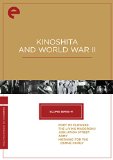| Reviews & Columns |
|
Reviews DVD TV on DVD Blu-ray 4K UHD International DVDs In Theaters Reviews by Studio Video Games Features Collector Series DVDs Easter Egg Database Interviews DVD Talk Radio Feature Articles Columns Anime Talk DVD Savant Horror DVDs The M.O.D. Squad Art House HD Talk Silent DVD
|
DVD Talk Forum |
|
|
| Resources |
|
DVD Price Search Customer Service #'s RCE Info Links |
|
Columns
|
|
|
Eclipse Series 41: Kinoshita and World War II
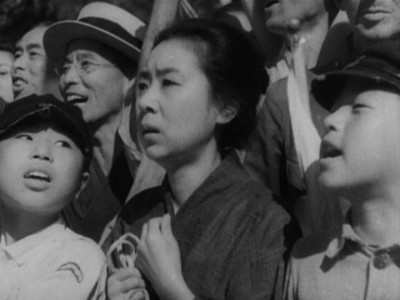
The Movies:
Care for some World War II propaganda, told from the Japanese side?
Criterion's five-film Eclipse Series 41: Kinoshita and World War II examines the earliest output of one of Japan's most popular, prolific director-screenwriters. Coincidentally, Keisuke Kinoshita (1912-1998) got his start directing at the premiere film studio Shochiku as the Japanese government began persuading movie makers to do stories that boosted citizens' morale during World War II. The five brief, sweet contemporary melodramas on this set prove to be interesting for their propaganda techniques, as well as being a good showcase for Kinoshita's preference for touching, small-scale human stories.
Eclipse Series 41: Kinoshita and World War II consists of the following films:
Port of Flowers (1943; 82 minutes)
Kinoshita's debut film, Port of Flowers, is an unassuming, Capra-like comedy of errors that plays it so breezily that one almost misses the propaganda. It's there, however - morale-boosting in Japan was less about rousing displays of machismo and military might (as in American and British WWII movies) than making a subtle reinforcement of their culture's traditional values. Sacrificing individuality for the common good, a strong sense of dignity, and honoring previous generations are recurring themes throughout Port of Flowers and the other films in this set. Taking place in a bucolic seaside village, the story concerns two grifting con men from the city - Shuzo (Eitaro Ozawa) and Tomekichi (Ken Uehara) - who arrive at the town's inn separately, both claiming to be the son of a recently deceased businessman beloved by the community. After the initial confusion gets (hilariously) cleared up, Shuzo and Tomekichi both agree to work together to dupe the locals into investing in a ship-building scheme. Before they can leave town with their absconded cash, however, the war breaks out and the locals' gumption leaves Shuzo and Tomekichi having second thoughts about the whole scheme. The arrival of the dead man's wife and child and an ill-timed typhoon will signal their redemption.
Despite Kinoshita's still-developing direction and a few offbeat moments of stridency ("Curse the American devils!"), Port of Flowers is suffused with the same understated charm as his later comedies. Kinoshita softens the wartime sloganeering with a diverse array of nicely acted characters and charming atmosphere.
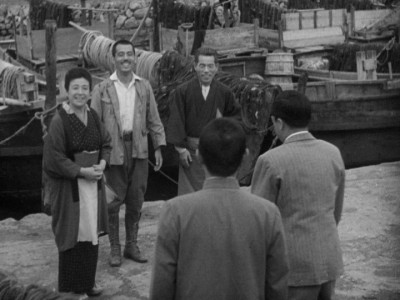
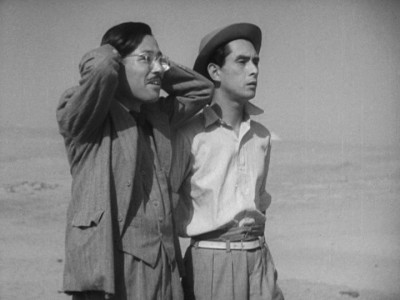
The Living Magoroku (1943; 89 minutes)
Opening with some relatively lavish scenes depicting a violent feudal battle in the year 1573, The Living Magoroku examines the need to cast aside superstitious ways and uphold the traditional Japanese family unit in times of war. The hero is not some virile John Wayne type but the slight Yoshiro Onagi (Yasumi Hara), a sickly young man who is held back from his full potential by a 300-year-old curse placed on his family's farmland. While Yoshiro's mother (Mitsuko Yoshikawa) is insistent that the fallow land not be disturbed out of fear of reawakening the curse. Meanwhile, an Army doctor (Toshio Hosokawa) visits the town blacksmith, desperately attempting to track down an ancient sword once owned by the Onagi family. Kinoshita also incorporates a romantic subplot - with Yoshiro's kind-hearted sister and the local bus driver wanting to marry despite their families' disapproval -into this compact, multi-narrative saga. The main point Konishita makes lies in putting aside petty differences and working together towards the greater good - in this case, making a productive farm to support the war effort. The propaganda is laid on more heavily here, but Kinoshita's optimism is personified with Yoshiro's transformation from passive observer to proactive, healthy paragon of virtue.
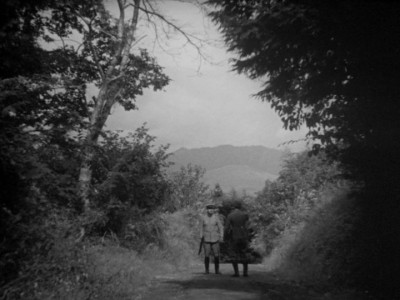
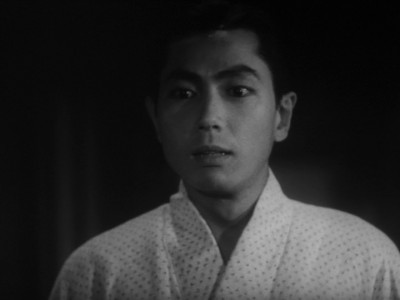
Jubilation Street (1944, 73 minutes)
Kinoshita's talent for writing charming scenes of daily life involving a diverse set of characters is on full display in Jubilation Street, which chronicles the reactions of a small settlement after they receive notice that they're forced to relocate. The multi-narrative plot mostly concentrates on Shingo Furukawa (the appealing Ken Uehara), an idealistic young test pilot who occupies space in the settlement with his mother (Chiyo Nobu). Both await the return of Shingo's father, who hasn't communicated with them since leaving to find work ten years earlier. Shingo wants to marry Takao Zenba (Mitsuko Mito), the sweet and docile daughter of the settlement's planner, but his tenuous family situation is met with objection by Mr. Zenba and his wife. The Zenba/Furukawa conflict is softened with the characters' friendly interactions with a printer and his family, the proprietor of a struggling bathhouse, his skeptical wife, and the local postal delivery man. If it all seems somewhat lightweight, the sudden, unexpected return of Shingo's father (Eijiro Tono) throws all the characters' prior concerns into stark relief. Kinoshita adeptly ties together these differently toned subplots with a compact gracefulness. The employment of surprising camera angles makes it his most visually adventurous film thus far.
The notes accompanying this disc state that Jubilation Street was made to promote the drive to evacuate Japanese people in urban areas in anticipation of American air raids. Any sense of propaganda is kept in the background up until the final scenes, when the residents gather to give some of their own a warm sendoff.
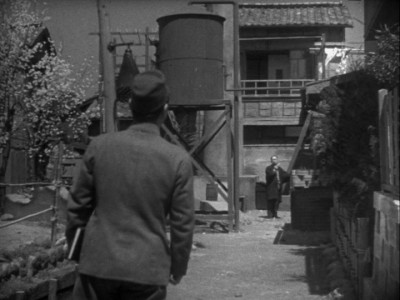
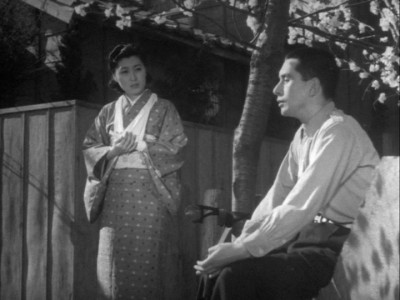
Army (1944; 87 minutes)
With the sweeping, multi-generational Army, Kinoshita intended to make a grand statement about Japan's duty to the war effort and how it relates to their traditional values exalting honor, personal sacrifice, and respect for elders. The result is a movie that is odd, talky, extremely didactic and stilted at times yet tremendously moving (at least in the final ten minutes). Although the story arc ponderously goes back to the 19th century, mostly it centers on a contemporary family with the strict, militaristic father, Tomohiko (Chisu Ryu), expressing reservations about the weakness of their young son, Shintaro, to the boy's doting mother, Waka (Kinuyo Tanaka). Deeply instilled in the ways of military obedience (although physically unable to fight in Japan's 1904-05 war with Russia), Tomohiko worries that his son is unprepared to fight when the war breaks out. Will the grown-up Shintaro (Kazumasa Hoshino) be a disappointment, or will he fulfill his duty to his elders and his country and become an honorable soldier?
Army's strident screenplay (tellingly not written by Kinoshita) takes on the patronizing view that all boys need to suck up their feelings and "be a man" when it comes to facing life's challenges, but Kinoshita introduces some ambivalence into what is otherwise rigid propaganda in the film's final scenes. With the adult Shintaro fully prepared for battle, his mother experiences an epiphany and rushes to be at his side in the chaotic send-off parade for the troops. Without giving too much away, these final scenes are extraordinarily done, and the mother is given a beautifully layered portrayal by actress Kinuyo Tanaka (who, up until the end, served as a relatively minor figure in the story). Kinoshita's finale switches from the formal, studio-bound setups to spontaneous handheld camera, capturing Waka's confusion when she can't locate Shintaro and the elation when they're reunited. It's a fantastic ending in a film that is otherwise too stodgy and jingoistic to fully stomach.
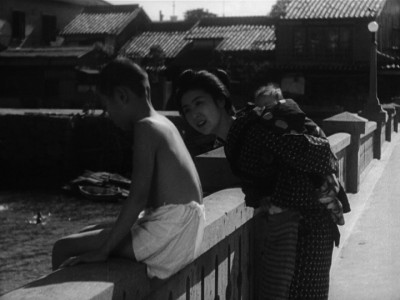
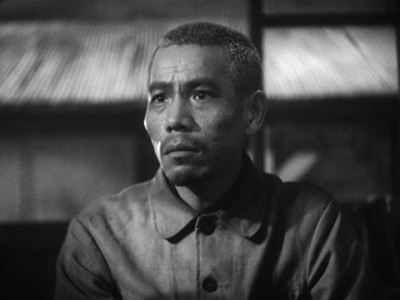
Morning for the Osone Family (1946; 81 minutes)
For his first film after World War II's end, Kinoshita threw himself into the cathartic antiwar drama Morning for the Osone Family, which chronicles the wrenching effects the conflict had on a typical pacifist family. Opening on Christmas Eve 1943, we peer in on a harmonious gathering as the family's widowed mother Fusako (Haruko Sugimura) celebrates with her grown children Yuko (Mitsuko Miura), Ichiro (Toshinosuke Nagao), Taiji (Shin Tokudaiji), and Takashi (Shiro Osaka). The festivities are interrupted by a government official, however, who has arrived to arrest one of Osone sons for his inflammatory anti-establishment writing. Over the next few years, the remaining Osones are forced to move in with a relative whose stern, militaristic views contrast sharply with the oppressed, intellectual family. With Kinoshita indulging in every misfortune that could possibly befall this family, the dramatics come across as heavy-handed, but it's also thoughtfully crafted with a lot of sympathy for the characters (even the ones whose views Kinoshita apparently disagreed with). He particularly gets an excellent performance from Haruko Sugimura, best known for the shrewish women she played in Ozu's Late Spring and Tokyo Story. On its own, the melodramatics in Morning for the Osone Family don't seem particularly noteworthy, although in the context of this set it's fascinating to see what Kinoshita wanted to do without the interference of the Japanese propaganda system. Although he wasn't entirely free of outside influence (the U.S. occupying forces had some input, notably in the film's tacked-on happy ending), Kinoshita's optimism and faith in humanity is on full display here, a harbinger for heart-tugging (some may say manipulative) later films like Twenty-Four Eyes.
Along with the previously-released-on-disc Twenty-Four Eyes (1954) and The Ballad of Narayama (1958), Kinoshita and World War II is a valuable addition to the Criterion collection. While it's true that Kinoshita didn't have the singularity of vision seen in contemporaries like Ozu and Kurosawa, he was a master film craftsman who effectively worked across several different film genres. Criterion's Hulu Plus streaming channel contains enough of the prolific director's films to fill up several Eclipse sets. Some of the recommended Kinoshitas include fish-out-of-water comedy Carmen Comes Home (the first Japanese feature film photographed in color, from 1951), the subtle, achingly gorgeous time-shifting drama Snow Flurry (1959) and the zippy, hugely entertaining dysfunctional family saga Broken Drum (1949).
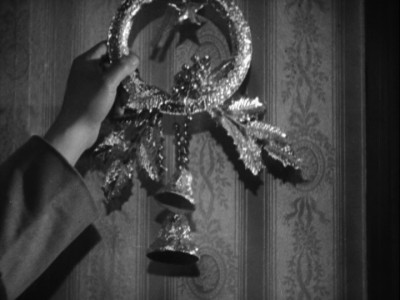
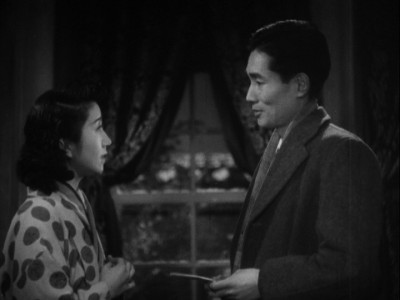
The DVDs:
The five-DVD Kinoshita and World War II is packaged similarly to other Eclipse sets, with a paperboard slipcover holding together five clear plastic slim-packs, one to a film. Essays on each film are printed on the inside front cover of each package.
Video
The unrestored prints used on Kinoshita and World War II are nicely presented, despite using less-than-stellar source material. As DVD Savant pointed out, the fact that these degraded prints survived in any condition is something of a miracle in itself. Scratching, age spots, dirt and pin holes are a common occurrence, while several scenes in all five movies have the wobble seen in warped celluloid prints. The gray levels in the photography are well-balanced, however.
Audio
The mono Japanese-language soundtracks on these films are in a similarly ragged state, with frequent instances of pops, noise and hiss. The damage generally isn't terrible to the point of distraction, although the dialogue in one scene from Jubilation Street was completely obscured by hiss. Optional English subtitles are the default viewing option on all four discs.
Extras
None on the discs themselves, although each film comes with excellent essays from critic Michael Koresky, offering a wealth of background information.
Final Thoughts:
The four expertly crafted dramas (and one light comedy) in Criterion's Kinoshita and World War II Eclipse set serve as an eye-opening examples of how the Japanese did anti-American propaganda (a little less jingoistic than Hollywood, and a lot more guilt-tripping). The fact that they also present the prolific Keisuke Kinoshita (Twenty Four Eyes; The Ballad of Narayama) as a confident young storyteller is a pleasant bonus. Recommended.
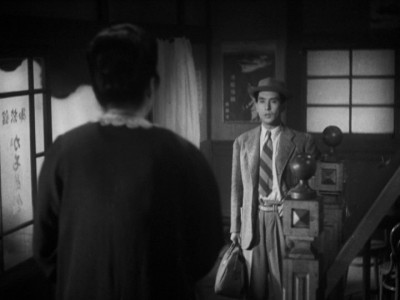
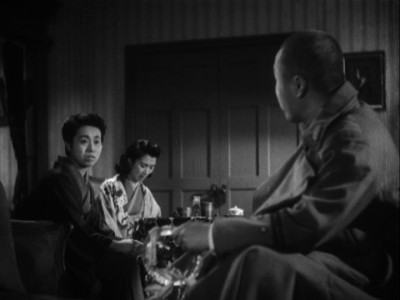
Matt Hinrichs is a designer, artist, film critic and jack-of-all-trades in Phoenix, Arizona. Since 2000, he has been blogging at Scrubbles.net. 4 Color Cowboy is his repository of Western-kitsch imagery, while other films he's experienced are logged at Letterboxd. He also welcomes friends on Twitter @4colorcowboy.
|
| Popular Reviews |
| Sponsored Links |
|
|
| Sponsored Links |
|
|
| Release List | Reviews | Shop | Newsletter | Forum | DVD Giveaways | Blu-Ray | Advertise |
|
Copyright 2024 DVDTalk.com All Rights Reserved. Legal Info, Privacy Policy, Terms of Use,
Manage Preferences,
Your Privacy Choices | |||||||









